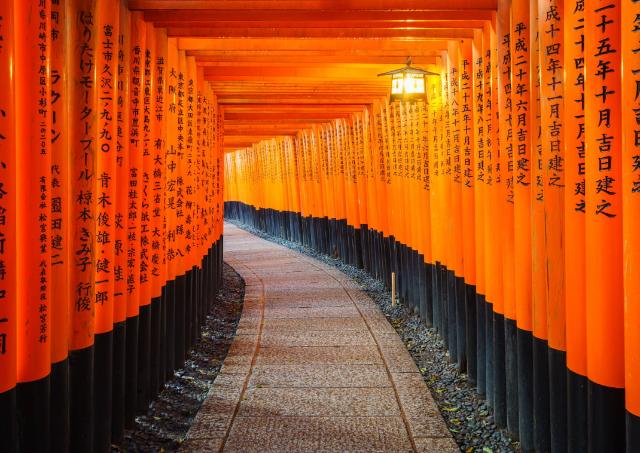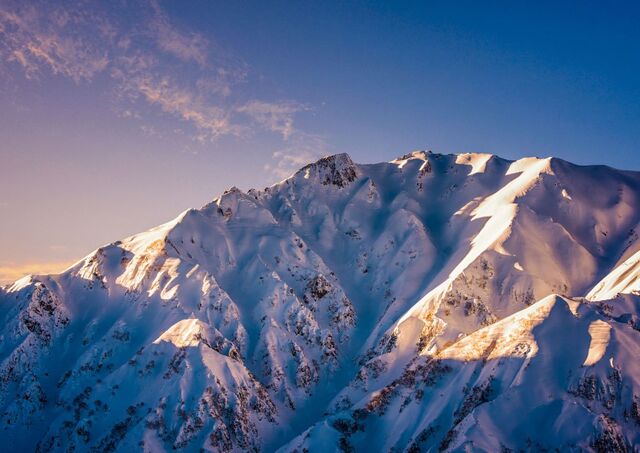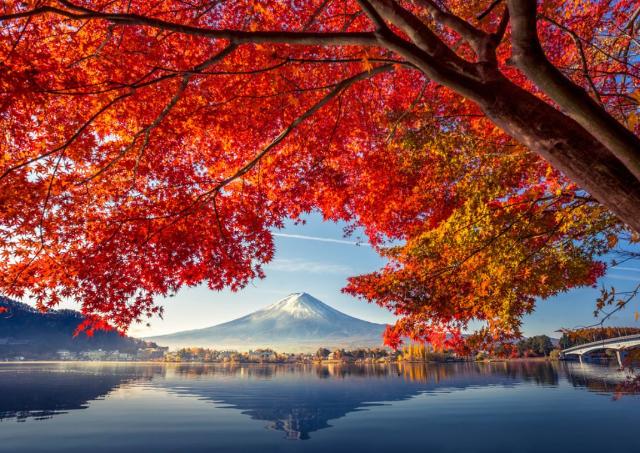Why Hokkaido Makes the Perfect Summer Japan Trip
Because Hokkaido is so far north, it’s known for its snowy scenes and cold weather. But that cooler northern climate is one reason it’s the perfect place to visit in summer!
Japan’s summertime (July-August) can be pretty intense on the main island and further south. Temperatures can reach over 30°C and an average of 80% humidity in July, so it feels a bit like stepping into a room where you just poured a bath… but all the time. Needless to say, that’s not a great feeling! So if you’re visiting Japan in summer, cooler Hokkaido might be a more fun option.
But it’s not just the cool climate that makes Hokkaido fun to visit in summer, there are also interesting sights and delicious summer food, so let’s take a look at what to expect.
Otaru Canal in Hokkaido in summer
Summer Weather in Hokkaido
We’ve mentioned that it’s cooler, but how cool exactly?
Hokkaido is a large prefecture, so the weather varies across the northern island. But in its capital city, Sapporo, the average daytime temperature for June is 18.7°C, July 22.3°C, and August 23.7°C, with the evenings going down to the lower teens. It’s less common for temperatures to reach or go above 30°C, as in Tokyo, though it does happen in July. The cooler evenings make for a nice break from the heat of the day.
Also, while Japan’s main island experiences a summer rainy season, Hokkaido doesn’t get the same amount of intense rainfall. Of course, it does rain, but not nearly as much as in Tokyo!
Lavender fields at Tomita Farm in Furano, Hokkaido
What to do in Hokkaido in summer
Because of that lovely weather, it’s a great time to visit Hokkaido’s outdoor spots while they’re not covered in snow.
One of Hokkaido’s most famous summer spots is Furano, known for its beautiful lavender fields. One of the most popular spots to see the purple fields is at Tomita Farm, which has three lavender fields and several other summer-blooming flower fields, perfect for photos.
If you’re more into trekking and nature watching, the Kushiro Marshlands is a favourite for nature lovers. You can walk the trails, canoe through its waters, or even view it from above in a hot air balloon!
There are so many other interesting outdoor places to visit, so here are a few to start you off:
Lake Mashu
Aoike
Jigokudani
Shiretoko
Onuma Park
Former Hokkaido Government Office in Sapporo
The best Hokkaido Summer Itinerary in 2 weeks
We recommend the following itinerary for the perfect Hokkaido summer trip:
Day 1 Memanbetsu Airport - Utoro Onsen
Our itinerary starts from Memanbetsu Airport.
From there pick up a rental car and transfer to Utoro Onsen (approx. 90 km). Driving in Japan can be an extraordinary experience.
Utoro is located on the Shiretoko Peninsula, a UNESCO World Heritage National Park. The town is best known for its onsen. Spend 2 nights at Utoro Onsen.
Day 2 Utoro Onsen - Rausu (Shiretoko National Park)
Next on the itinerary is Rausu on the Shiretoko Peninsula, the gateway to Shiretoko National Park. This park is a true paradise for nature lovers and is full of waterfalls, lakes and hot springs.
Enjoy one of the onsen on the east coast of the peninsula, especially those overlooking the Rausu River. At the Rausu Visitor Centre, you can get information about the Rausu Geyser and the Kumanoyu Onsen (a natural hot spring that you can enjoy free of charge).
Shiretoko National Park
Day 3 Utoro Onsen - Akan (Akan National Park)
The journey continues to Akan National Park, where you will find stunning lakes famous for their crystal clear waters, such as the famous Akan Lake, amidst dense forests and an extraordinary landscape that has been shaped over thousands of years by volcanic activity.
You can spend 2 nights in Akan.
Day 4 Akan
Get some time to continue exploring Akan National Park and its wonders.
Lake Mashu (on the eastern side of the park) is considered by many to be the clearest lake in the world and by far the most beautiful in Japan. To the northeast is Lake Kussharo, located in a large caldera. To the west is Lake Akan, known for its spherical green algae bulbs called marimo.
There are still active volcanoes scattered throughout the park that can be visited or climbed. You can walk up around the smoking area of the volcano and see the yellow, sulphurous chimneys up close.
If you're into birdwatching, be sure to check out the Kushiro Marsh National Park, where you can see Japanese cranes.
Akan is home to one of the main "Ainu" settlements, Akanko Ainu Kotan, a traditional village with restaurants and shops selling Ainu handicrafts, history, music and food.
Lake Mashu
Day 5 Akan - Sounkyo Onsen (Daisetsuzan National Park)
To enhance your Hokkaido adventure, head to Sounkyo Onsen, located in the north of Daisetsuzan National Park, one of the largest in the country and one of the best places to enjoy impressive nature. This journey takes about 4.5 hours of spectacular driving through gorges, meadows, and valleys. Mount Asahidake is the highest point on the island, at an altitude of 2,290m. You can spend three nights at Sounkyo Onsen.
Day 6 Sounkyo Onsen (Daisetsuzan National Park)
On this day you can visit Sounkyo Onsen village, located in Daisetsuzan National Park, the largest national park in Hokkaido. Sounkyo Onsen is also known as "Sounbetsu", which means "the river with many waterfalls".
This spa town is ideally situated in a picturesque gorge that offers many options for those interested in discovering the local nature.
It is highly recommended to take a walk inside the gorge to see its two beautiful waterfalls, Ryusei and Ginga no Taki (Milky Way Waterfalls). The best way to reach them is by foot, bicycle, or cable car, and admire the natural beauty of Hokkaido in all its splendour.
Ryusei (right) and Ginga no Taki (left) waterfalls
Day 7 Sounkyo Onsen - Furano
It´s time to transfer to Furano!
In the centre of Hokkaido, Japan's northernmost island, lies the ski resort of Furano, which has slopes for skiers of all abilities and plenty of after-ski options. Furano has plenty of evening entertainment and dining options. Don't forget to enjoy a soak in one of the many open-air hot spring baths (onsen) with the most beautiful views of the valley and mountains.
The Furano tourist office regularly organises cultural events such as music and dance performances, tea ceremonies and taiko drum lessons. Furano's natural beauty can be appreciated in all seasons with starry skies in winter, the purple flowers of Rhododendron dauricum in spring, the intense colour of lavender in summer and the beautiful shades of red and ochre in autumn.
Stay for two nights in Furano.
Day 8 Furano
Don't miss the iconic flower fields of Nakafurano or the Hinode Park in Kamifurano. Nakafurano is home to Tomita Farm, one of the first lavender farms to open its doors to tourists. Its lilac fields are among the most photographed in Hokkaido, blooming mainly in June and July. Here you can try the curious lavender ice cream or find out a little more about the distillation process and the perfume that is made from these flowers.
If you feel like it, you can go to neighbouring Biei, a pantone of colour in its rolling hills. From April to October, you can enjoy the wonderful and colourful array of flowers in the Shikisai no Oka garden, with tulips, sunflowers, lavender, dahlias and anemones. Biei is also famous for its fascinating Aoi-ike (blue pond), which varies from turquoise blue to emerald green to cobalt blue, depending on the time of year.
Tomita Farm lavender fields
Day 9 Furano - Toya (Shikotsu-Toya National Park)
On this day, we also recommend an early departure from Furano, in order to enjoy the spectacular drive to Shikotsu-Toya National Park. On the way, and if you can fit in with the opening hours, you can make a stop at Shimukappu, at the impressive Unkai Terrace observatory (access is by cable car, 13 min. from Hoshino Resort Tomamu), located at an altitude of more than 1,000 m. and from which you can see a sea of clouds at your feet. You can spend 2 nights in Toya.
Day 10 Toya (Shikotsu-Toya National Park)
The area is named after the two beautiful lakes that form the heart of the park. We recommend a visit to the volcanic lake Toya. While you are here you can take a hot spring bath in one of the wonderful onsen. Noboribetsu is a highly recommended spa town where you will find an impressive volcanic landscape known as Jigokudani, which means "Valley of Hell", full of volcanic activity.
We recommend continuing to Lake Shikotsu. On the eastern shore of the lake, you will find the village with a visitor centre and some accommodation options.
A one-hour drive from Toya is Shiraoi, home to the "Upopoy", an open-air museum and National Park dedicated to the "Ainu" people, where you can discover the "Ainu" culture and history.
Noboribetsu town
Noboribetsu town
Day 11 Toya (Shikotsu-Toya National Park) - Hakodate
It´s time to transfer to Hakodate (approx. 2 hrs). The city is located on the southern tip of the island and is one of the main access routes to the island of Hokkaido. Its modern port was also one of the first to open to foreign trade after the country's hermetic isolation during the Edo period. As a result, the city has a notable Western influence. We recommend spending two nights in Hakodate.
Goryokakaku Fort in Hakodate
Day 12 Hakodate
Free day at your disposal to visit Hakodate. Be sure to visit the emblematic Motomachi district, a former residence area for Westerners, or the iconic Goryokakaku Fort, considered one of the first Western-style fortresses in Japan and unmistakable with its star shape. Here you can find some unique buildings such as the Russian Orthodox church, the former British consulate, a Chinese memorial pavilion or the former Hakodate public hall. If you feel like it, you can go to Matsumae, home of the only Japanese-style castle in Hokkaido (about 1.5 to 2 hrs from Hakodate).
Day 13 Hakodate – Sapporo
At a time of your choice, transfer to Sapporo. This is one of the favourite destinations for snow lovers as well as for outdoor activities in an environment of nature and unquestionable beauty, simply incredible. Sapporo is famous for hosting the Sapporo Snow Festival and its impressive ice sculptures, and the 1972 Winter Olympics. Modern and Western in character, Sapporo is famous for its food, especially its famous beer. Two-night stay in Sapporo is recommended to enjoy at the maximum.
Day 14 Sapporo
One of the days we recommend you take advantage and go for dinner and try the famous seafood of the island in the lively neighbourhood of Susukino. You can also visit Otaru, a beautiful harbour town famous for its canal, glass making and local seafood. Once you have left your luggage at the hotel, we recommend you start discovering the city. For those who want to indulge themselves, we recommend a visit to the fantastic Sapporo Beer Museum, where you can sample different local varieties, or visit Shiroi Koibito Park, a museum entirely dedicated to chocolate.
If you prefer, we also recommend a stroll through the unique and modern Moerenuma Park or a trip to Nijo Market, where you can sample some delicious fresh fish at one of the many food stalls. If you want to learn about Hokkaido's history, visit the open-air historical museum on the outskirts of Sapporo. To end the day, take a stroll to Susukino, the city's lively entertainment district, and enjoy its night-time illumination.
Day 15 Sapporo - Chitose Airport (Sapporo)
Early morning return of the rental car at Sapporo airport and head home.
Hokkaido’s City Sights
If you’re more of a culture vulture or city lover, there’s plenty of that in Hokkaido as well.
It’s a popular option to make Sapporo your base, as it is the prefecture’s capital city so is the most lively, but is also in a good location to visit other areas, too. Many tourists choose to visit Otaru when staying in Sapporo, because it is not too far to travel.
Sapporo has some interesting museums and cultural spots, such as the Sapporo Beer Museum, the Historical Village open-air museum, and the Susukino Shopping District. However, it also has interesting markets like the Nijo fish market and Curb Market.
Otaru, on the other hand, is a quaint harbour city known for its picturesque canal. It is also home to the Nikka Whisky Distillery and, unsurprisingly, some great seafood restaurants.
Other than Sapporo and Otaru, here are some of Hokkaido’s popular cities and events:
Hakodate
Noboribetsu
Asahikawa
Matsumae
Jozankei Onsen
Toyohira River Fireworks Show (July, Sapporo)
Hakodate Port Festival (August, Hakodate)
Mikasa Hokkai Bon Odori (August, Mikasa)
Red King Crab claws on a grill
Hokkaido’s Delicious Summer Food
In Japan, Hokkaido is known as one of the best foodie places in the country. The prefecture produces over half of the country’s dairy, so there are tons of tasty cheese products and some delicious ice cream. But it’s also very well known for its seafood.
In summer, some of the best seafood to try in Hokkaido is sea urchin, squid, and red king crab. Sea urchins are best from May to August, squid from July to August, and red king crab from August to October. They can all be found across Hokkaido, but some of the best places to eat it are directly at one of the fish markets.
The prefecture is also known for its great fruit and veg, with melon being one of the most famous, particularly Yubari Melon. The sweet and flavourful melons are just what you need on a warm summer’s day.
But if melon isn’t quite enough, you’ll also find tons of soft-serve ice cream everywhere you look, including lavender ice cream at the lavender farms!
Car driving through Biei, Hokkaido
Perfect for Road Trips
Hokkaido is relatively easy to visit from Tokyo, because now you can get the shinkansen (bullet train) as well as fly to one of their multiple airports. But once you are there, the best way to get around is probably to rent a car.
There are trains, buses, and tours to help you get around, but if you really want to explore freely a car will definitely help you do so. But Hokkaido is huge, so make sure to map out where you want to go (and note how far it is) before making your decision. There are plenty of car rental shops near airports and major train stations.
But What About the Snow?
Hopefully, we’ve given you enough reasons to visit Hokkaido in summer, but if you can’t get enough and are curious as to what Hokkaido is like in the winter, take a look at our post about its famous snow festival here.




